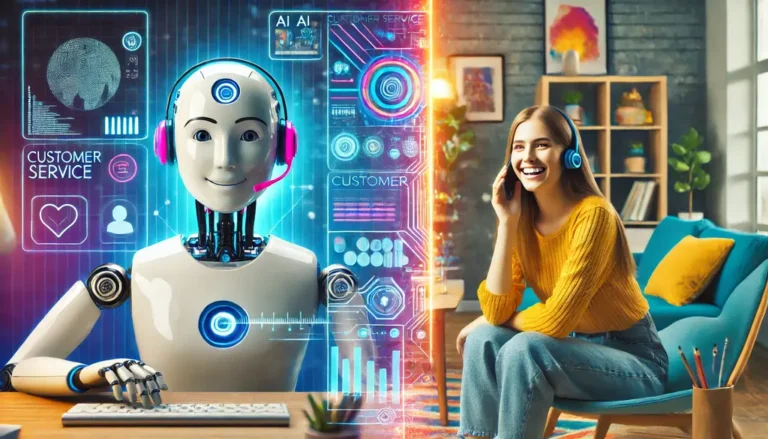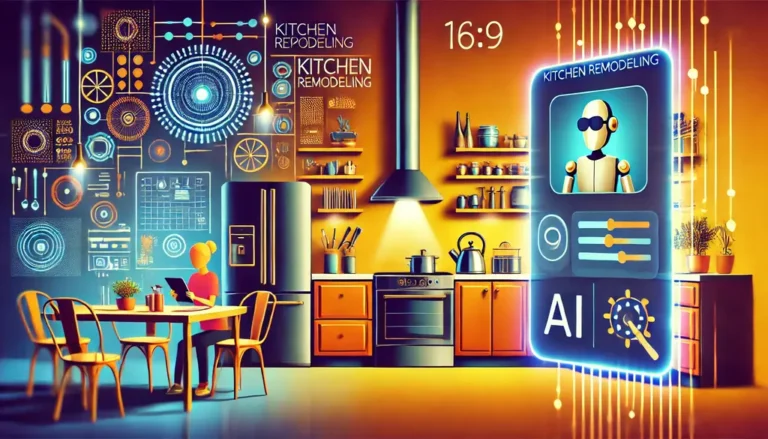Imagine a voice so smooth and real, you’d swear it’s your buddy talking, but nope—it’s AI. That’s neural text-to-speech (TTS) for you, and it’s a big deal. This tech grabs boring text and turns it into speech that’s warm, lively, and full of personality. It’s popping up everywhere—think call centers, audiobooks, or your phone’s virtual assistant.
If you’re a business owner looking to level up customer service or just a tech nerd like me, this guide’s got your back. We’re diving into what neural TTS is, how it pulls off its magic, where it’s making waves, and what’s coming next. No geek-speak overload, just a fun, deep dive that’s easy to follow. Ready? Let’s do this!
What’s the Deal with Neural Text-to-Speech?
Neural TTS is like having a voice actor on speed dial, except it’s all AI. It takes written words and spins them into speech that sounds like a real person, complete with the right vibe, pauses, and even a dash of emotion.
Remember those old TTS systems that sounded like a robot stuck in a tin can? Yeah, this is light-years beyond that. Neural TTS uses deep learning to make voices feel human.
The secret sauce is something called a speech synthesis neural network. Think of it as the brain that reads the text, figures out how it should sound, and nails it. Need a peppy “Thanks for calling!” or a soothing “Your order’s on the way”? Neural TTS has it covered.
It’s why companies are using it for everything from automated phone systems to tools that help people with visual impairments.
How Does Neural TTS Pull This Off?
Turning text into speech that sounds like a real person is no cakewalk. Neural TTS mixes some serious brainpower with tech wizardry. Here’s how it all comes together.
Step 1: Digging into the Text
It starts with the text itself. The system breaks it down into small chunks—phonemes (the tiny sounds in words), words, and sentences. Then, natural language processing (NLP) swoops in to get the context. It’s like the system’s reading between the lines.
For example, “I’m stoked!” comes out with energy, while “I’m stoked” might sound more low-key. This step makes sure the tone matches the message.
Step 2: Shaping the Sound
Next, the system decides how the speech should sound—pitch, speed, etc. Models like Tacotron 2 or FastSpeech are the MVPs here. They create spectrograms like visual sketches of how the sound waves should flow. It’s the plan for the audio.
Step 3: Bringing It to Life
Now, the audio gets real. A vocoder—think WaveNet or Neural Vocoder—takes that spectrogram and turns it into sound you can hear. The best vocoders make it so clear and smooth, you’d think someone’s right there talking to you. No crackles or weird noises, just pure, natural speech.
This whole thing hinges on a ton of human speech recordings. We’re talking thousands of hours of people talking—different accents, tones, and emotions. The system soaks it all up, learning how to mimic real voices. The more diverse the recordings, the better they sound like anyone, anywhere.
What Makes Up a Neural TTS System?
Neural TTS is like a recipe with some must-have ingredients. Here’s what’s in the mix.
- Text Preprocessor: Tidies up the text, swapping “$10” for “ten dollars” or “St.” for “street.”
- Prosody Model: Adds the rhythm, pauses, stresses, and flow, so it doesn’t sound like a robot.
- Acoustic Model: Figures out the sound’s personality, like how high or soft it should be.
- Vocoder: Turns the sound plan into actual audio you can hear.
- Post-Processing: Polishes the audio, wiping out glitches for a super-clean finish.
These bits work together like a band jamming out, creating speech that’s hard to tell apart from a real person.
Why Businesses Are Obsessed with Neural TTS
Neural TTS isn’t just neat—it’s a game-changer for companies. It’s saving cash, making customers smile, and opening new possibilities. Here’s why it’s such a hit.
Customers Love It
Nobody likes a robotic voice that sounds like it’s reading a script. Neural TTS brings voices that feel like a real person, whether it’s a phone system or a chatbot. A survey showed over 80% of people prefer human-like AI voices. That means fewer annoyed hang-ups and more folks who feel heard.
Save Money, Stay Awesome
Hiring voice talent or staffing giant call centers is pricey. Neural TTS lets you automate appointment reminders or order statuses without sounding lame. A shop could handle a zillion calls with a friendly voice, leaving human agents for the tough stuff.
Talk to the World
Neural TTS can speak tons of languages and accents like a native. That’s huge for businesses going global. A small company in Seattle could offer support in French, Hindi, or Portuguese, making customers feel right at home.
Make Things Accessible
For folks who are visually impaired, neural TTS is a lifesaver. It powers screen readers and audiobooks with voices that are clear and engaging. Businesses, schools, and nonprofits can reach more people, making things fairer for everyone.
Give Your Brand a Voice
Want your brand to sound quirky? Professional? One-of-a-kind? Neural TTS lets you create a custom voice that screams “you.” A gym might pick a pumped-up, motivational tone, while a spa goes for calm and zen. It’s like branding with a megaphone.
Where Neural TTS Is Killing It
Neural TTS is showing up everywhere, making things better and cooler. Here’s where it’s doing its thing.
Call Centers and Support
Phone systems use neural TTS to walk you through menus or answer basic questions. It’s clear, friendly, and doesn’t make you want to scream. Companies like T-Mobile are using it to keep callers chill.
Virtual Assistants
From Alexa to custom office AIs, neural TTS makes talking to tech feel like chatting with a friend. A store manager could ask an AI for sales numbers and get a natural response.
Online Learning
E-learning sites need audio that keeps students glued. Neural TTS brings narration that’s lively and fun. Platforms like Skillshare are using it to pump out courses without hiring voice actors.
Gaming and Audiobooks
Video games use neural TTS for killer character voices—think a sneaky spy or a wise old mentor. Audiobooks get a boost, too, with narration that pulls you right into the story.
Healthcare
Hospitals send automated messages, like “Your meds are due at 7 PM,” with kind and clear voices. It helps patients stick to their plans and feel cared for.
Marketing and Ads
Brands use neural TTS for TikTok voiceovers, radio spots, or video explainers. A custom voice makes your ad feel fresh, cutting through all the noise.
Neural TTS vs. Old TTS
Old-school TTS—like concatenative or formant systems—was like listening to a robot with a sore throat. 20% of people prefer human-like AI voices. That means fewer annoyed hang-ups and more folks who feel heard.
Save Money, Stay Awesome
Hiring voice talent or staffing giant call centers is pricey. Neural TTS lets you automate appointment reminders or order statuses without sounding lame. A shop could handle a zillion calls with a friendly voice, leaving human agents for the tough stuff.
Talk to the World
Neural TTS can speak tons of languages and accents like a native. That’s huge for businesses going global. A small company in Seattle could offer support in French, Hindi, or Portuguese, making customers feel right at home.
Make Things Accessible
For folks who are visually impaired, neural TTS is a lifesaver. It powers screen readers and audiobooks with voices that are clear and engaging. Businesses, schools, and nonprofits can reach more people, making things fairer for everyone.
Give Your Brand a Voice
Want your brand to sound quirky? Professional? One-of-a-kind? Neural TTS lets you create a custom voice that screams “you.” A gym might pick a pumped-up, motivational tone, while a spa goes for calm and zen. It’s like branding with a megaphone.
What’s Next for Neural TTS?
Neural TTS is on fire, and it’s only getting hotter. Here’s what’s coming up.
Voices That Feel You
Soon, TTS will sense your mood—maybe from your voice or what you say—and tweak its tone. If you sound stressed, it might go extra calm to chill you out. That’s gonna feel so real.
Every Language Gets Love
Thanks to smart tech like transfer learning, even languages with hardly any recordings will get TTS. That’s awesome for small communities and businesses going global.
TTS on Your Gadgets
Running TTS on your phone or smart speaker means quicker replies and no data sent to the cloud. Offline navigation with a perfect voice? Yup, it’s happening.
Clone Voices Easily
Businesses will make custom voices with just a quick audio snippet. Picture your brand’s mascot chatting up customers or your founder narrating videos.
Team Up with Other Tech
TTS will mix with visual or touch AI for wild experiences. Think of a virtual assistant that talks and moves like a real person, blowing your mind.
How to Pick a Neural TTS Platform
Choosing the right neural TTS tool takes some thought. Here’s how to nail it.
- Check the Voice: Play some demos. Does it sound real for your needs, like phone greetings or e-learning?
- Make Sure It Grows: Can it handle a ton of calls or users? Look for APIs that fit your systems.
- Get Custom: Want a special voice or accent? See what you can tweak.
- Watch Your Budget: Cloud plans are usually cheaper than building your setup. Shop around.
- Stay Legal: Pick something that follows rules like GDPR, especially for sensitive stuff like healthcare.
- Look for Help: Go with a company that’s got your back with support and keeps things updated.
Big names like Google Cloud TTS, Amazon Polly, Microsoft Azure TTS, and IBM Watson TTS are solid bets. Google’s great for languages, Polly’s easy on the wallet, and Azure’s built for big players. Check their sites for demos and prices.
Tips to Rock Neural TTS in Your Business
Ready to jump in? Here’s how to make neural TTS a total win.
- Start Easy: To test the waters, try it on something small, like phone menus or a training video.
- Get Your Team Excited: Show them how TTS saves time and wows customers so they’re pumped.
- Listen to Users: Ask what they think about the voice’s vibe or speed, then tweak it.
- Write Smart: Keep text simple—skip slang or weird phrases that might trip it up.
- Track the Good Stuff: Check stats like faster call fixes or happier customers to show it’s paying off.
Let’s Wrap It Up
Neural text-to-speech is straight-up awesome. It’s not just about machines talking, making them sound like they get you, whether helping customers or telling a story. From smoother call centers to tools that make life fairer for everyone, neural TTS is where it’s at. Sure, there’s stuff to figure out, like keeping costs down or staying ethical, but the tech’s moving fast.
If you’re running a business, now’s the time to play with neural TTS and see what it can do. This guide’s got all the juicy details—how it works, why it’s cool, and where it’s headed. So go for it, have fun, and let your brand’s voice shine!
FAQs – Neural TTS
Q1) How is Neural TTS different from older text-to-speech technologies?
Neural TTS utilizes deep learning models trained on vast amounts of human speech data to generate natural-sounding speech. Older technologies typically relied on rule-based systems or concatenating small snippets of recorded speech, often resulting in robotic or less fluid output.
Q2) What are some of the main benefits of using Neural Text-to-Speech?
Key benefits include significantly improved naturalness and human-like voice quality, enhanced prosody (rhythm and intonation), the ability to convey emotions in some models, greater flexibility for voice customization, and support for multiple languages and accents.
Q3) In what kind of applications is Neural Text-to-Speech commonly used?
Neural TTS is found in a wide range of applications such as AI-powered virtual agents in call centers, virtual assistants like Siri and Alexa, accessibility tools for the visually impaired, e-learning platforms, content creation for videos and podcasts, navigation systems, and interactive voice response (IVR) systems.
Q4) Is it possible to create a custom voice using Neural Text-to-Speech?
Neural TTS allows custom voices to be created tailored to specific needs, often for branding purposes. Additionally, voice cloning technology, often built upon Neural TTS, enables the creation of a synthetic replica of a specific person’s voice.
Q5) What is the future outlook for Neural Text-to-Speech technology?
The future of Neural TTS is focused on achieving even more realistic and emotionally expressive voices, providing users with finer-grained control over voice styles, advancements in voice cloning capabilities, and deeper integration with other AI technologies like natural language understanding for more sophisticated conversational AI.








